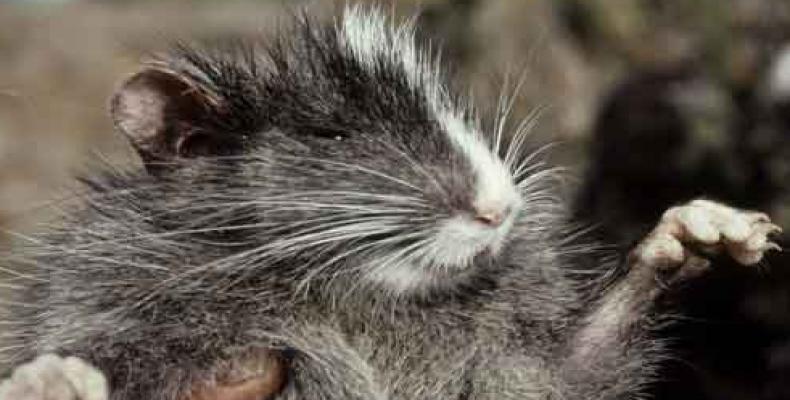Lima, September 29 (Andina-RHC) -- Near South America's most famous archaeological site, Machu Picchu, a group of scientists from Peru and Mexico has recently found alive a mammal that was thought to have been extinct for almost 400 years: The Machu Picchu arboreal chinchilla rat (Cuscomys oblativa).
According to science news Mongabay, until recently, the species entire identity was linked to a couple skulls found in Incan pottery in 1912 and was believed extinct.
But in 2009, the park ranger, Roberto Quispe, photographed near the archaeological site what was believed to be a living Machu Picchu arboreal.
After conducting extensive field work, the group of scientists were able to find a living specimen, confirming that the species actually never went extinct.
“In Conservation Biology this type of rediscoveries is called the Lazarus effect,” writes the team of scientists led by Horacio Zeballos the curator of the Department of Mammalogy at the Museum de Arequipa and Gerardo Ceballos from the Instituto de Ecología of the Universidad Nacional Autónoma de México.
Likewise, the team believe they have uncovered at least six species new to science, including a new mammal, a new lizard, and four new frogs in the same area.
"The discovery of so many species of mammals, reptiles and amphibians in the past three years place our working group as one of the world leaders on the issue," said Gerardo Ceballos.
'Extinct' Mammal Rediscovered in Peru's Machu Picchu

Articles en relation
Commentaires
Laissez un commentaire
Tous les champs sont requisPlus de visites
- Le PCC célèbre le 66e anniversaire de la révolution cubaine (+Photo)
- Au Salvador, des critiques s'élèvent contre l'approbation d'une loi qui relance l'exploitation des mines métalliques
- La Havane a célébré le 66e anniversaire du triomphe de la révolution cubaine (+Photos)
- Venezuela : Le procureur général réfute les prétendues leçons du ministre argentin des Affaires étrangères
- Le président Díaz-Canel souligne l'héroïsme du peuple cubain

